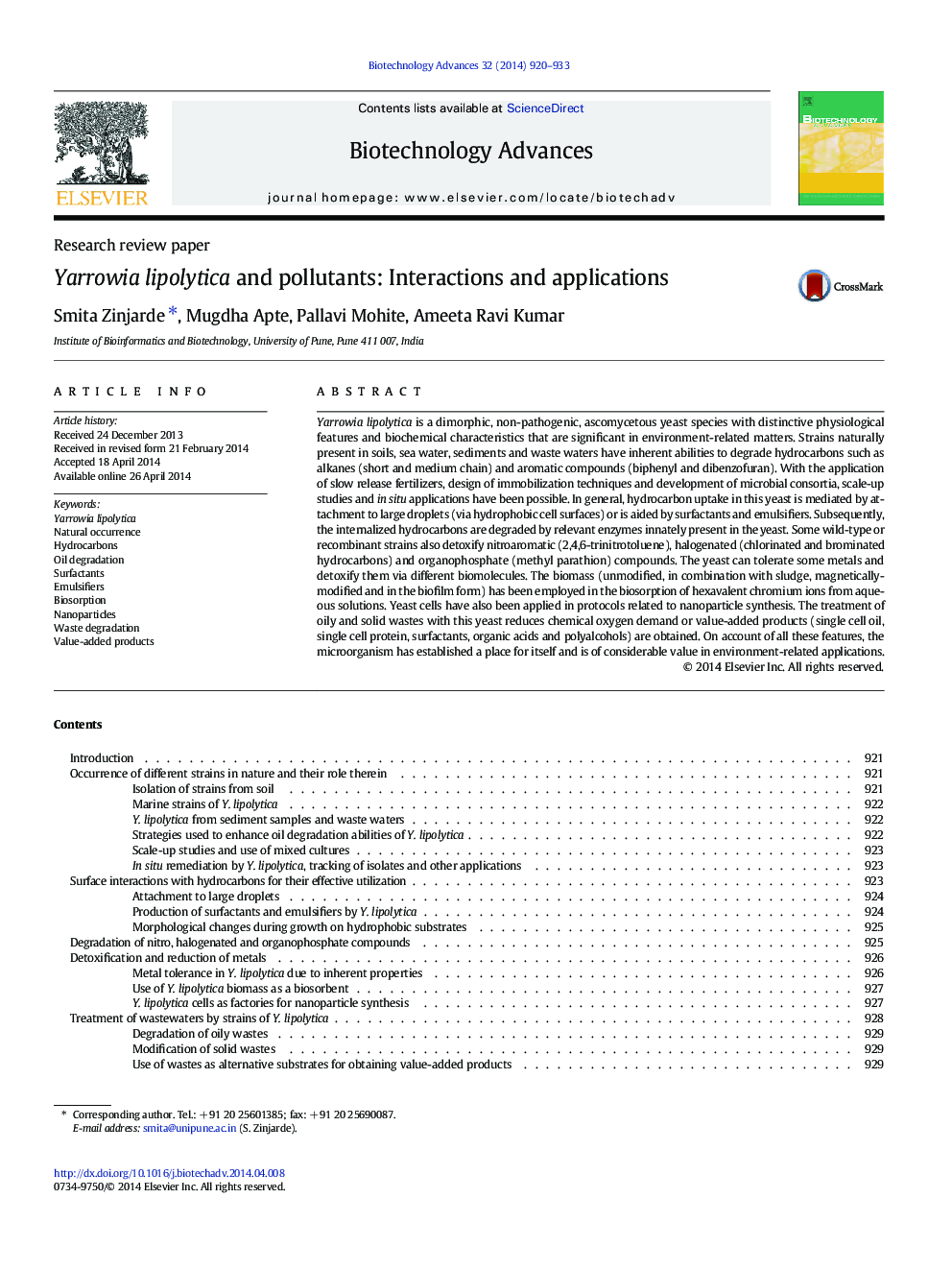| Article ID | Journal | Published Year | Pages | File Type |
|---|---|---|---|---|
| 14296 | Biotechnology Advances | 2014 | 14 Pages |
•Yarrowia lipolytica is isolated from different polluted environments.•The yeast degrades aliphatic, aromatic, nitroaromatic and halogenated compounds.•Strains tolerate metals, mediate biosorption and form nanoparticles.•Some isolates reduce COD of wastes or value-added products are obtained.•The yeast is of considerable value in environment-related issues.
Yarrowia lipolytica is a dimorphic, non-pathogenic, ascomycetous yeast species with distinctive physiological features and biochemical characteristics that are significant in environment-related matters. Strains naturally present in soils, sea water, sediments and waste waters have inherent abilities to degrade hydrocarbons such as alkanes (short and medium chain) and aromatic compounds (biphenyl and dibenzofuran). With the application of slow release fertilizers, design of immobilization techniques and development of microbial consortia, scale-up studies and in situ applications have been possible. In general, hydrocarbon uptake in this yeast is mediated by attachment to large droplets (via hydrophobic cell surfaces) or is aided by surfactants and emulsifiers. Subsequently, the internalized hydrocarbons are degraded by relevant enzymes innately present in the yeast. Some wild-type or recombinant strains also detoxify nitroaromatic (2,4,6-trinitrotoluene), halogenated (chlorinated and brominated hydrocarbons) and organophosphate (methyl parathion) compounds. The yeast can tolerate some metals and detoxify them via different biomolecules. The biomass (unmodified, in combination with sludge, magnetically-modified and in the biofilm form) has been employed in the biosorption of hexavalent chromium ions from aqueous solutions. Yeast cells have also been applied in protocols related to nanoparticle synthesis. The treatment of oily and solid wastes with this yeast reduces chemical oxygen demand or value-added products (single cell oil, single cell protein, surfactants, organic acids and polyalcohols) are obtained. On account of all these features, the microorganism has established a place for itself and is of considerable value in environment-related applications.
